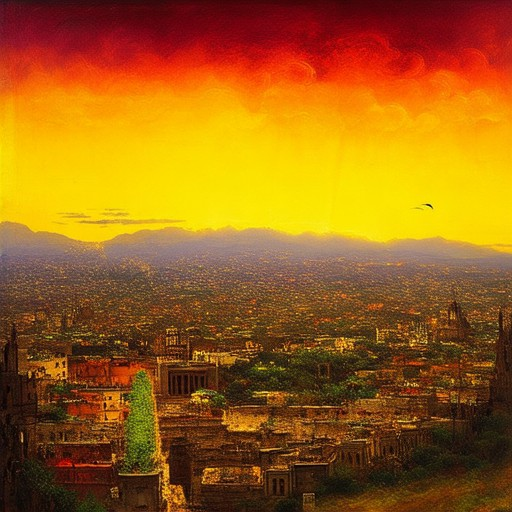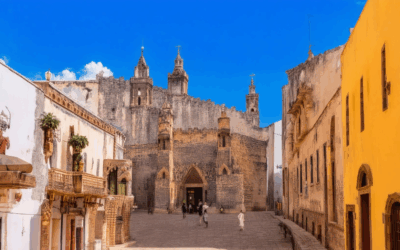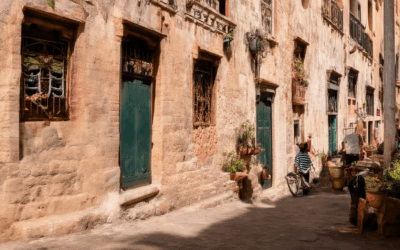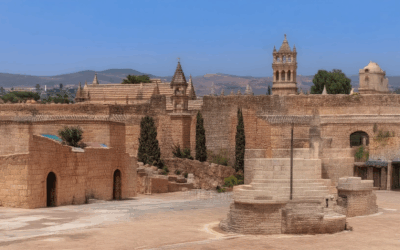Querétaro, a charming city in Mexico, captivates visitors with its rich history, diverse cuisine, and vibrant culture. Nestled in the heart of Mexico, Querétaro is often celebrated for its blend of indigenous influences and Spanish colonialism, making it a unique destination. Beyond its well-known attractions, Querétaro offers a deeper layer of food and culture that reflects its complex heritage. From the iconic enchiladas queretanas to the vibrant markets, the city’s culinary scene is a testament to its cultural richness. Additionally, the presence of the Otomi people adds another dimension to Querétaro’s identity, showcasing their traditions and contributions to the region. Whether exploring the local cuisine, discovering hidden gems, or delving into the city’s artistic and traditional offerings, Querétaro emerges as a place where history, art, and tradition converge, making it a fascinating destination to uncover.

What is Querétaro Known For Food?
Querétaro is renowned for its rich and diverse gastronomic offerings, blending pre-Hispanic traditions with colonial influences. The city is celebrated for its unique cuisine, which reflects the cultural melting pot of indigenous and Spanish roots. Here are some highlights of what Querétaro is famous for:
Traditional Dishes to Try:
- Enchiladas Queretanas: A signature dish featuring rolled corn tortillas filled with meat, beans, and cheese, covered in a rich red sauce.
- Gorditas: Fried corn patties stuffed with meats like pork or chicken, often topped with cheese, cream, and pickled onions.
- Tlayudas: Similar to pizzas, these large, thick crusts are typically topped with refried beans, cheese, and various meats.
- Pozole: A hearty stew made with pork, hominy, and vegetables, served with rice, tortillas, and salsas.
- Empanadas: Delicate dough pastries filled with fruits, cheeses, or meats, offering a sweet or savory treat.
Popular Eateries and Markets:
Querétaro boasts a vibrant food scene with local favorites and bustling markets. Visit places like:
- La Casona de Santo Domingo: A historic restaurant serving authentic Mexican dishes in a charming colonial setting.
- El Potrero: Known for its creative takes on traditional dishes, this eatery offers a modern twist on classic flavors.
- El Parque de la Republica: A lively public space with street food vendors offering everything from tacos to elotes (grilled corn).
- Casa de los Aztecas: Specializing in pre-Hispanic dishes, this spot is perfect for trying ancient recipes with a contemporary edge.
Drinks to Enjoy:
Don’t miss the chance to sample Querétaro’s unique beverages:
- Pulque: A traditional fermented maize drink, often flavored with fruits or spices, offering a refreshing taste.
- Agua de Jicama: Cool and crisp jicama juice, perfect for beating the heat.
Culinary Tourism:
For those planning a visit, Aqui Es Querétaro is your go-to guide for exploring the city’s culinary treasures. From street food to high-end dining, we’ve got you covered. Don’t miss the chance to experience the city’s gastronomic heritage firsthand!
Explore more of Querétaro’s culinary delights by visiting our comprehensive guide at Aqui Es Querétaro .
What is Querétaro, Mexico Known For?
Querétaro is a significant city in Mexico, renowned for its rich history, vibrant culture, and strong economic presence. Here are the key aspects that make Querétaro notable:
Economic Hub
Querétaro is a major hub for various industries, including aerospace, electronics, automotive, chemical, food, and finance. It is home to the headquarters of numerous multinational corporations, establishing it as a crucial center for business and innovation in Mexico.
Cultural Richness
The city boasts a deep-rooted cultural heritage, reflected in its traditional cuisine, festivals, and historic architecture. Querétaro’s blend of indigenous and Spanish influences makes it a unique destination for cultural exploration.
Wine Production
Querétaro is celebrated for its wine production, which has become the second largest in Mexico. The region is known for its high-quality grape varieties, contributing to the production of fine wines that are appreciated both nationally and internationally.
Historical Significance
Querétaro played a pivotal role in Mexico’s history, particularly during the colonial era. Its strategic location made it a key site for political and religious activities, leaving behind significant historical landmarks that attract visitors today.
Tourism
As a tourist destination, Querétaro offers a variety of attractions, including its charming colonial streets, the iconic Aqueduct of Querétaro, and the Basilica of Our Lady of Guadalupe, drawing pilgrims and tourists alike.
Education and Research
The city is also home to several universities and research institutions, contributing to its status as a center for education and innovation in Mexico.
By exploring these facets, one can truly appreciate the diversity and importance of Querétaro, Mexico.

Is Querétaro Aztec or Mayan?
Querétaro is primarily rooted in Aztec culture. As an important city within the Aztec empire, Querétaro served as a significant religious and administrative hub. Following the Spanish conquest, it evolved into a key colonial town, characterized by its Spanish Baroque architecture. While there is no substantial connection to the Maya, Querétaro’s history is deeply intertwined with the Aztecs and later Spanish influences.
Explore Querétaro’s rich cultural heritage .

What Ethnic Groups Are in Querétaro?
Querétaro, located in central Mexico, is home to a diverse cultural tapestry shaped by centuries of indigenous and colonial influences. Historically, the area was inhabited by various indigenous groups, including the Otomí, Tarasco, and Chichimec peoples, who played significant roles in the region’s pre-Columbian and colonial periods. During the colonial era, Spanish settlers integrated with these groups, leading to the development of a unique mestizo culture.
Today, Querétaro’s population reflects this rich blend of traditions. While the majority of the population identifies as mestizo, there are still communities that preserve the customs and languages of the original indigenous groups. The state is also known for its vibrant festivals and traditions, many of which draw from this multicultural heritage.
For more information about Querétaro’s cultural diversity and its indigenous communities, visit our culture section .
What Language Do They Speak in Querétaro?
The primary language spoken in Querétaro, Mexico, is Spanish. However, the region is also known for its rich indigenous heritage, with the Otomí language being the most prominent among several native languages. The Otomí language, part of the Oto-Manguean family, is still spoken by many communities in the area. Many residents are bilingual, fluently speaking both Spanish and Otomí.
Bilingualism in Querétaro
Most inhabitants of Querétaro are proficient in both Spanish and Otomí, allowing them to communicate effectively within their communities and with outsiders. This bilingualism is a testament to the region’s commitment to preserving its indigenous heritage while embracing modern communication.
Indigenous Languages in Querétaro
While Spanish dominates, Querétaro is home to several indigenous languages, with Otomí being the most widely spoken. Efforts to preserve and promote these languages have been made, contributing to the region’s unique cultural identity.
Cultural Significance
The presence of multiple languages reflects Querétaro’s diverse cultural background. Indigenous languages like Otomí are integral to the local identity, often used in traditional settings and rituals, ensuring their continued relevance and respect within the community.

What is the Otomi Lifestyle Like?
The Otomi lifestyle is a vibrant blend of tradition, nature, and community. As indigenous people of Mexico, particularly in regions like Querétaro, the Otomi culture is deeply rooted in agriculture, craftsmanship, and strong social ties.
Agriculture and Natural Resources
The Otomi people are known for their sustainable farming practices. They cultivate crops such as corn, beans, and chili peppers, which are essential for their diet and local economy. Many also grow coffee and sugarcane, which they sell at nearby markets. This agricultural focus ensures a self-sufficient lifestyle, tied closely to the land they cherish.
Craftsmanship and Artistry
Otomi artisans are renowned for their intricate embroidery, particularly the Tenango style from Hidalgo. These colorful and detailed designs reflect their cultural heritage and are highly valued both locally and internationally. Beyond embroidery, they also excel in pottery, basket weaving, and woodcarving, creating items that are both functional and decorative.
Festivals and Traditions
Throughout the year, the Otomi celebrate various traditions, including religious festivals and local rituals. These events often involve music, dance, and elaborate costumes, showcasing their rich cultural legacy. Festivals like the Dance of the Conquest are a highlight, offering a glimpse into their history and spirit.
Traditional Housing
Otomi homes are typically constructed using Adobe bricks and thatched roofs, reflecting their deep connection to nature. These structures are designed to be energy-efficient and adaptable to their environment. Inside, families gather in communal areas, fostering a sense of unity and shared life.
Music and Dance
Music plays a significant role in the Otomi lifestyle, with traditional instruments like drums and flutes accompanying ceremonies and celebrations. Dance is also integral, expressing joy, storytelling, and spiritual connection. Their performances are often a central part of community events.
Community and Social Life
The Otomi value strong community bonds. Families live in close proximity, sharing resources and labor. This collective approach to life ensures support during difficult times and promotes a sense of belonging. Traditional practices like mutual aid and shared responsibilities reinforce their social fabric.
In conclusion, the Otomi lifestyle is a harmonious existence balanced between nature, creativity, and community. It embodies resilience, cultural preservation, and a deep respect for the land and each other.





0 Comments